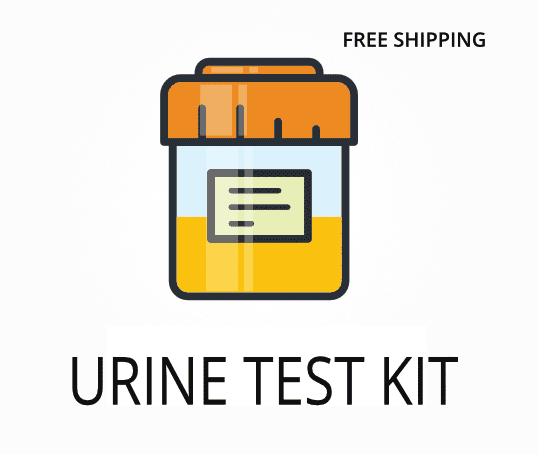Ordering the Comprehensive Neurotransmitter Profile | 24-hr Urine | Doctor’s Data
This test measures a wide range of neurotransmitters and their metabolites in a 24-hour urine sample, providing a detailed look at chemical messengers that affect mood, focus, sleep, and stress response. It is often used to help identify imbalances that may be linked to symptoms like anxiety, depression, fatigue, brain fog, and sleep problems. Interestingly, this test can also reveal patterns related to chronic pain and immune function, which are not always obvious through standard blood work.
Ordering this test can help you and your healthcare provider:
- Pinpoint specific neurotransmitter imbalances that may be affecting mood, energy, or sleep.
- Track how stress hormones like cortisol and adrenaline are impacting your daily function.
- Guide targeted support for symptoms such as irritability, panic attacks, or trouble focusing.
- Monitor changes in neurotransmitter levels over time to see how treatments are working.
- Identify less common issues, such as abnormal histamine or glutamate levels, that may be missed by other tests.
Who Should Consider Neurotransmitter and Mood Testing
People who have been struggling with ongoing mood swings, trouble sleeping, or difficulty concentrating may find this test helpful, especially if these symptoms have not improved with basic lifestyle changes. For example, someone who has tried different diets, exercise routines, or supplements but still feels anxious or tired could benefit from a closer look at their neurotransmitter patterns.
Ordering this test may also be useful in these situations:
- Persistent fatigue that does not improve with rest or sleep.
- Unexplained irritability or emotional ups and downs.
- Difficulty falling or staying asleep, even with good sleep habits.
- Brain fog or forgetfulness that interferes with work or school.
- Unusual cravings for certain foods, which can sometimes be linked to neurotransmitter shifts.
Testing for neurotransmitter levels can help identify specific chemical imbalances that may be contributing to symptoms like low mood, poor focus, or disrupted sleep, allowing for more targeted support. Delaying this test could mean missing the chance to address these imbalances early, which may make symptoms harder to manage over time. To move forward, consider ordering the test to get a clearer picture of your neurotransmitter status.
Preparing for Neurotransmitter and Brain Chemistry Testing
Fasting is not required for this 24-hour urine test, but it is important to collect all urine over the full 24-hour period as instructed. Make sure to carefully follow any directions provided by your doctor or healthcare provider to ensure the sample is collected correctly and the results are as useful as possible.
Labs Included When Ordering Your Comprehensive Neurotransmitter Profile | 24-hr Urine | Doctor’s Data
| Test Name | Reference Range | Significance | Low and High Levels of the Marker |
|---|---|---|---|
| 3,4-Dihydroxyphenylacetic acid (DOPAC) | 300-2,500 | DOPAC is a breakdown product of dopamine, showing how much dopamine is being used in the body. It helps assess dopamine metabolism and related brain activity. | High levels mean increased dopamine breakdown, which may be linked to stress or stimulant use.
Low levels mean reduced dopamine activity, possibly related to low mood or motivation. |
| 3-Methoxytyramine | 30-300 | 3-Methoxytyramine is another dopamine metabolite, reflecting how dopamine is processed. It can help identify abnormal dopamine signaling. | High levels mean increased dopamine turnover, sometimes seen in stress or certain neurological conditions.
Low levels mean reduced dopamine metabolism, which may be linked to low energy or focus. |
| 5-Hydroxyindolacetic acid (5-HIAA) | 2-9 | 5-HIAA is the main breakdown product of serotonin, a neurotransmitter important for mood and sleep. It helps show how much serotonin is being used. | High levels mean increased serotonin breakdown, which may be linked to certain medications or tumors.
Low levels mean reduced serotonin activity, often seen in depression or sleep problems. |
| Catecholamine Fractionation, free | Varies by age and sex | This test measures free catecholamines, including dopamine, norepinephrine, and epinephrine, which are key for stress response and alertness. | High levels mean increased stress or adrenal activity.
Low levels mean reduced stress response, possibly linked to fatigue or low motivation. |
| Creatinine | 0.5-2.0 | Creatinine is used to check if the urine sample is complete and to adjust other results for urine concentration. | High levels mean concentrated urine or possible kidney issues.
Low levels mean diluted urine or low muscle mass. |
| Dopamine, free | 100-800 | Dopamine is a neurotransmitter that affects motivation, focus, and movement. This test shows how much dopamine is available in the body. | High levels mean increased stimulation or stress.
Low levels mean reduced drive, focus, or mood. |
| Epinephrine, free | 0-20 | Epinephrine, also called adrenaline, is released during stress and helps the body respond quickly. This test shows how much is being produced. | High levels mean increased stress or anxiety.
Low levels mean reduced stress response or adrenal fatigue. |
| Gamma-aminobutyrate (GABA) | 100-400 | GABA is a calming neurotransmitter that helps control anxiety and promote relaxation. This test shows how much GABA is present. | High levels mean increased calming activity, sometimes seen with supplements.
Low levels mean more anxiety, tension, or trouble relaxing. |
| Glutamate | 10-100 | Glutamate is an excitatory neurotransmitter important for learning and memory. This test helps show if levels are balanced for brain function. | High levels mean increased stimulation, which may be linked to headaches or agitation.
Low levels mean reduced brain activity or focus. |
| Glycine | 100-400 | Glycine is a calming neurotransmitter that also helps with sleep and muscle control. This test shows how much glycine is present. | High levels mean increased calming effects, sometimes seen with supplements.
Low levels mean more muscle tension or sleep problems. |
| Histamine | 10-50 | Histamine is involved in immune response and can affect mood and alertness. This test helps identify if histamine is contributing to symptoms. | High levels mean increased allergy or inflammation activity.
Low levels mean reduced immune response or fatigue. |
| Metanephrine Fractionation | Varies by age and sex | This test measures breakdown products of adrenaline and noradrenaline, helping to assess adrenal gland function and stress response. | High levels mean increased adrenal activity or stress.
Low levels mean reduced adrenal output or fatigue. |
| Metanephrine | 0-350 | Metanephrine is a breakdown product of adrenaline, showing how much adrenaline is being used. It helps check for stress or adrenal issues. | High levels mean increased stress or adrenal gland activity.
Low levels mean reduced stress response or adrenal fatigue. |
| Norepinephrine, free | 15-80 | Norepinephrine is a neurotransmitter important for alertness and focus. This test shows how much is available for brain and body function. | High levels mean increased stress or anxiety.
Low levels mean reduced alertness or low energy. |
| Normetanephrine | 0-600 | Normetanephrine is a breakdown product of norepinephrine, helping to show how much norepinephrine is being used in the body. | High levels mean increased stress or adrenal activity.
Low levels mean reduced norepinephrine metabolism or low energy. |
| Phenethylamine (PEA) | 10-40 | PEA is a natural stimulant that can affect mood and attention. This test helps show if PEA is balanced for mental clarity. | High levels mean increased stimulation or excitement.
Low levels mean reduced mood or focus. |
| Serotonin | 50-220 | Serotonin is a neurotransmitter that helps regulate mood, sleep, and appetite. This test shows how much serotonin is available in the body. | High levels mean increased serotonin activity, sometimes seen with certain medications.
Low levels mean low mood, anxiety, or sleep problems. |
| Taurine | 100-400 | Taurine is an amino acid that supports calming and relaxation. This test shows if taurine is present at helpful levels for brain and nerve function. | High levels mean increased calming effects, sometimes from supplements.
Low levels mean more anxiety or trouble relaxing. |
| Tryptamine | 0-10 | Tryptamine is a breakdown product of tryptophan, which is used to make serotonin. This test helps show if serotonin production is balanced. | High levels mean increased tryptophan breakdown.
Low levels mean reduced serotonin production. |
| Tyramine | 0-20 | Tyramine is a natural compound that can affect blood pressure and mood. This test helps show if tyramine is balanced in the body. | High levels mean increased stimulation or blood pressure.
Low levels mean reduced energy or mood. |
| Tyrosine | 30-120 | Tyrosine is an amino acid used to make dopamine, norepinephrine, and epinephrine. This test shows if there is enough tyrosine for neurotransmitter production. | High levels mean increased supply for neurotransmitter production.
Low levels mean reduced ability to make dopamine or adrenaline. |
Reference ranges may change slightly as labs update their methods or as new research becomes available.
Comprehensive Neurotransmitter Profile FAQ
Is there Comprehensive Neurotransmitter Profile testing near me?
This is a test kit that you can collect at home and return by mail, so you do not need to visit a lab for the sample. For those dealing with symptoms like anxiety or brain fog, having a convenient at-home option means you can collect your sample when it works best for you, making the process less stressful and more accessible.
How do I interpret the test results?
While your treating physician should review your results, we also offer a one-on-one test results review with our clinical team to help you understand your results and what they mean for your symptoms.
What is the cost of the test?
The price listed for this test includes standard shipping to you and return shipping to the lab, but local draw fees may apply. Ordering this test can help you address symptoms like mood swings or sleep problems more quickly by identifying specific neurotransmitter imbalances.
How often should I retest?
It is usually recommended to retest every 3 to 6 months, especially if you are making changes to your treatment plan or symptoms are changing. Regular retesting helps track progress and allows for adjustments to support mood, focus, or sleep as needed.
How accurate is the test?
This test uses high-performance liquid chromatography with electrochemical detection, which is highly specific and sensitive for measuring neurotransmitters in urine. The specificity is 98% and the sensitivity is 97%. TrueHealthLabs.com partners with CLIA-certified and CAP-certified laboratories to uphold rigorous testing standards for dependable results.
Important Notes
- The test kit cannot be mailed or collected in New York. Contact us with questions.
Medical Review Board
Reviewed by Jeff Donohue M.D. from Body Logic and Brady Hurst DC, CCCN. Written by True Health Lab’s team of editorial health contributors.
Disclaimer: This information is for educational purposes only and not intended as medical advice. Consult your healthcare provider for personalized guidance.
Why Customers Trust True Health Labs - What People are saying
Also rated 4.6 out of 5 based on 3452 ShopperApproved reviews- See all TrueHealthLabs.com reviews.









